
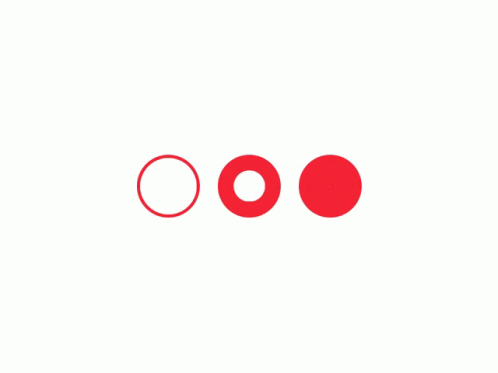


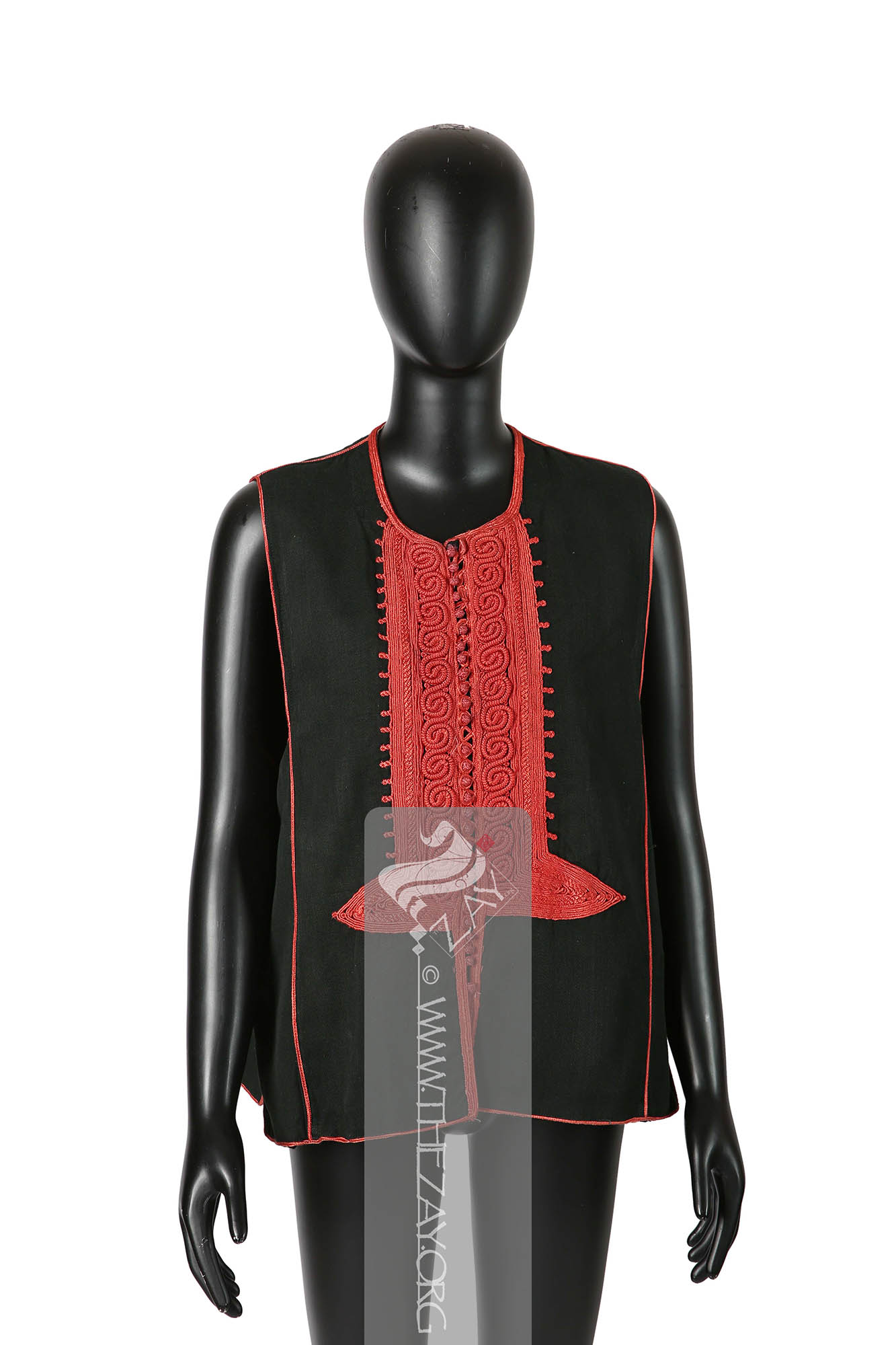
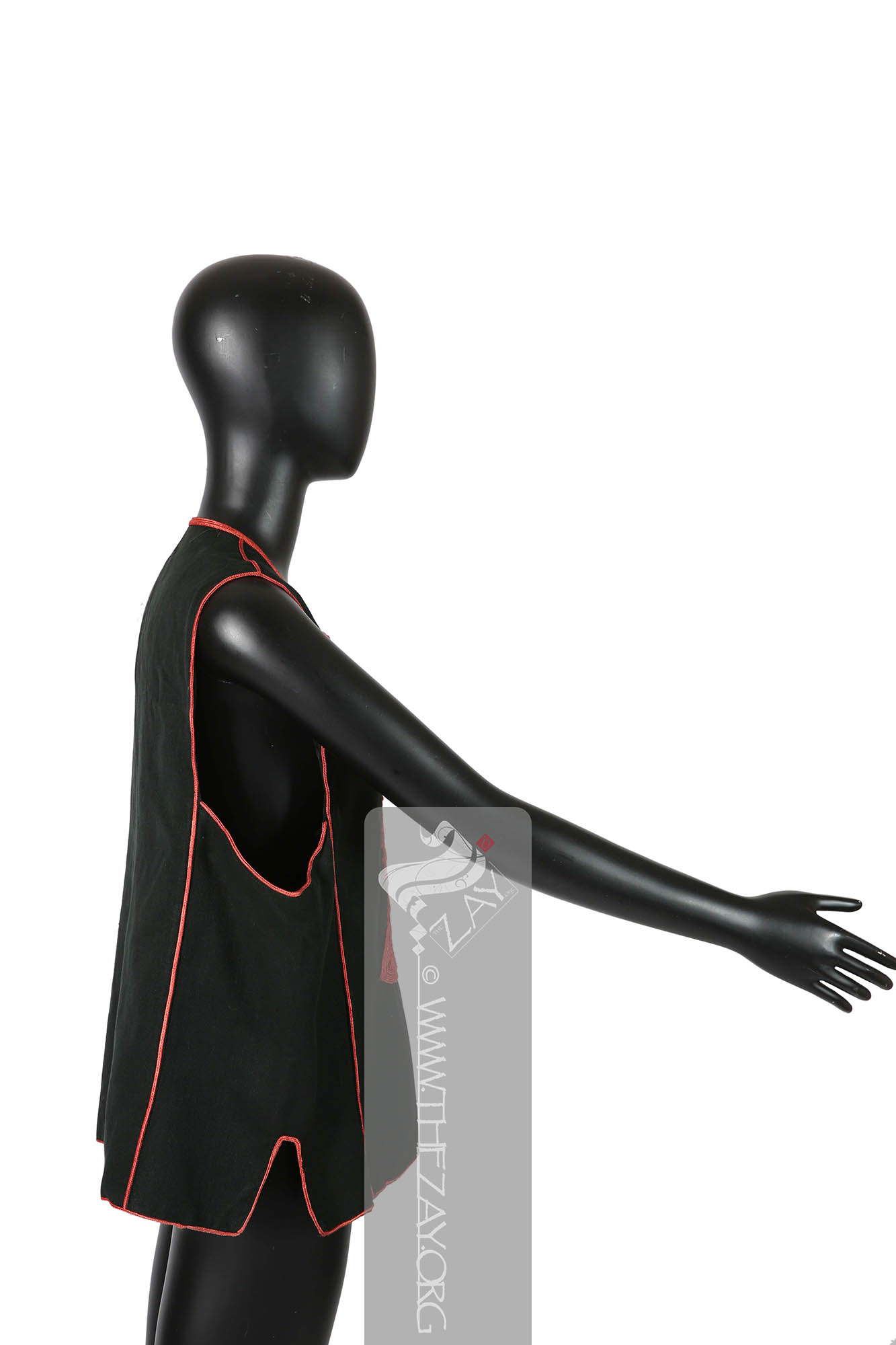
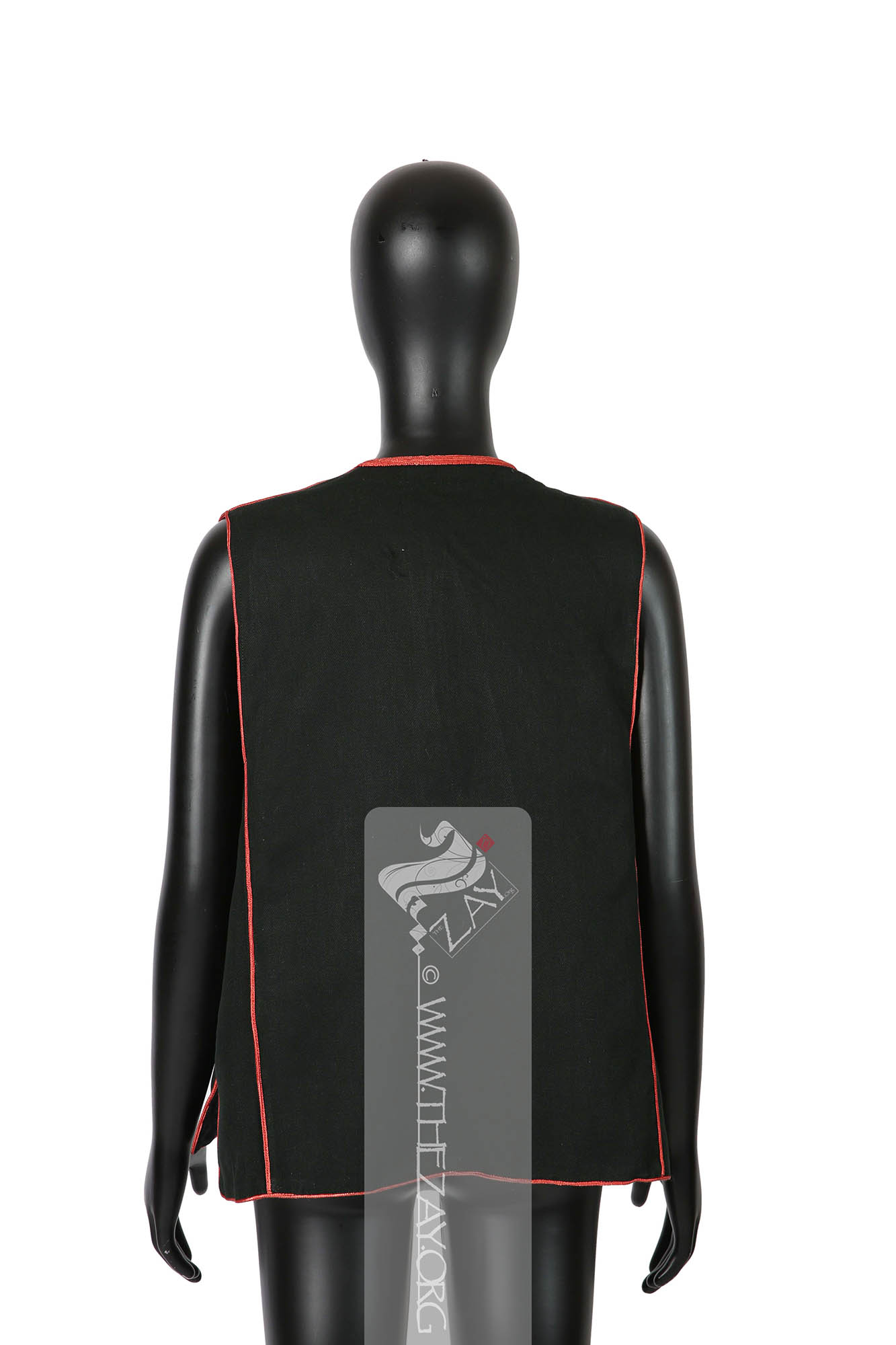
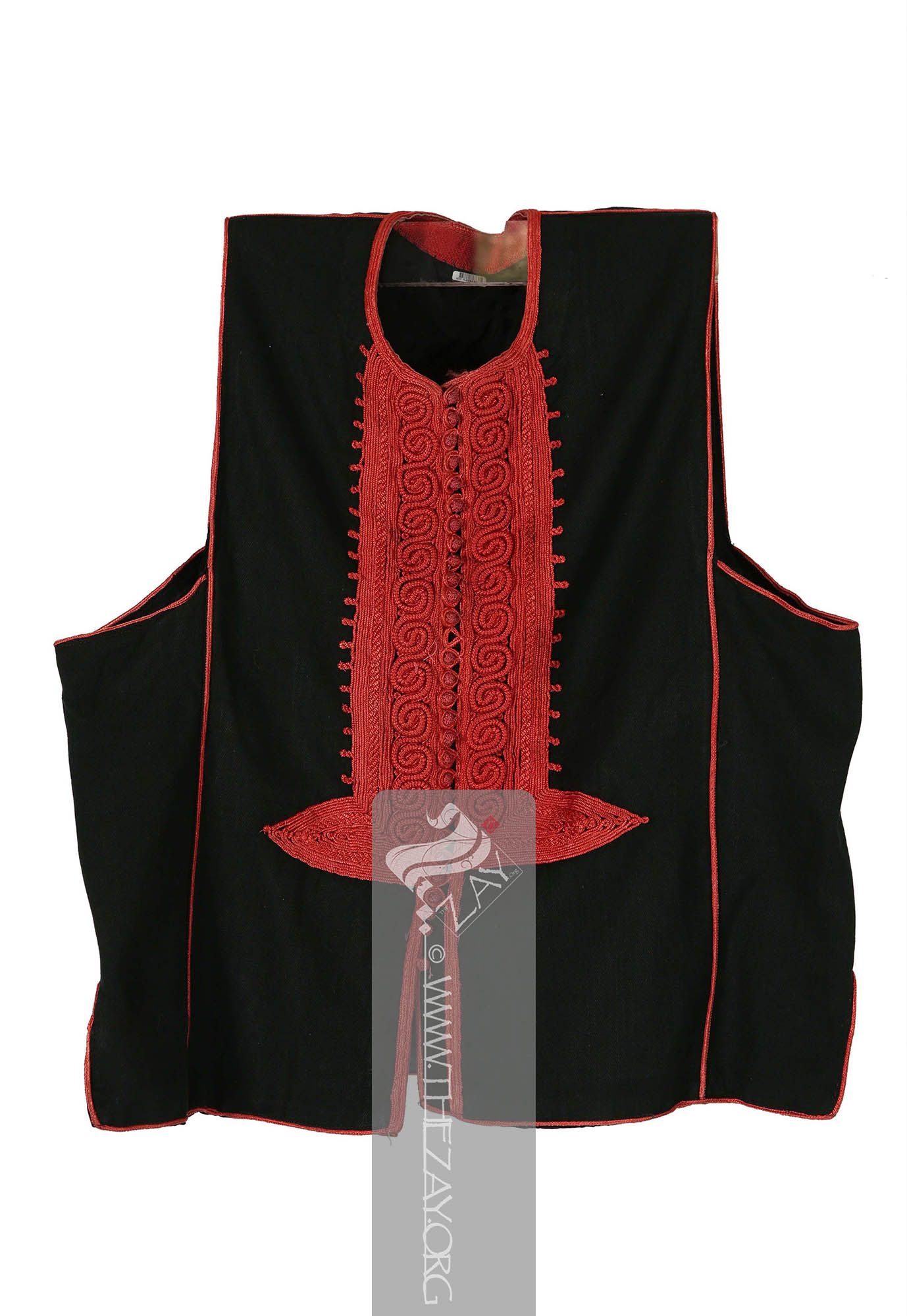

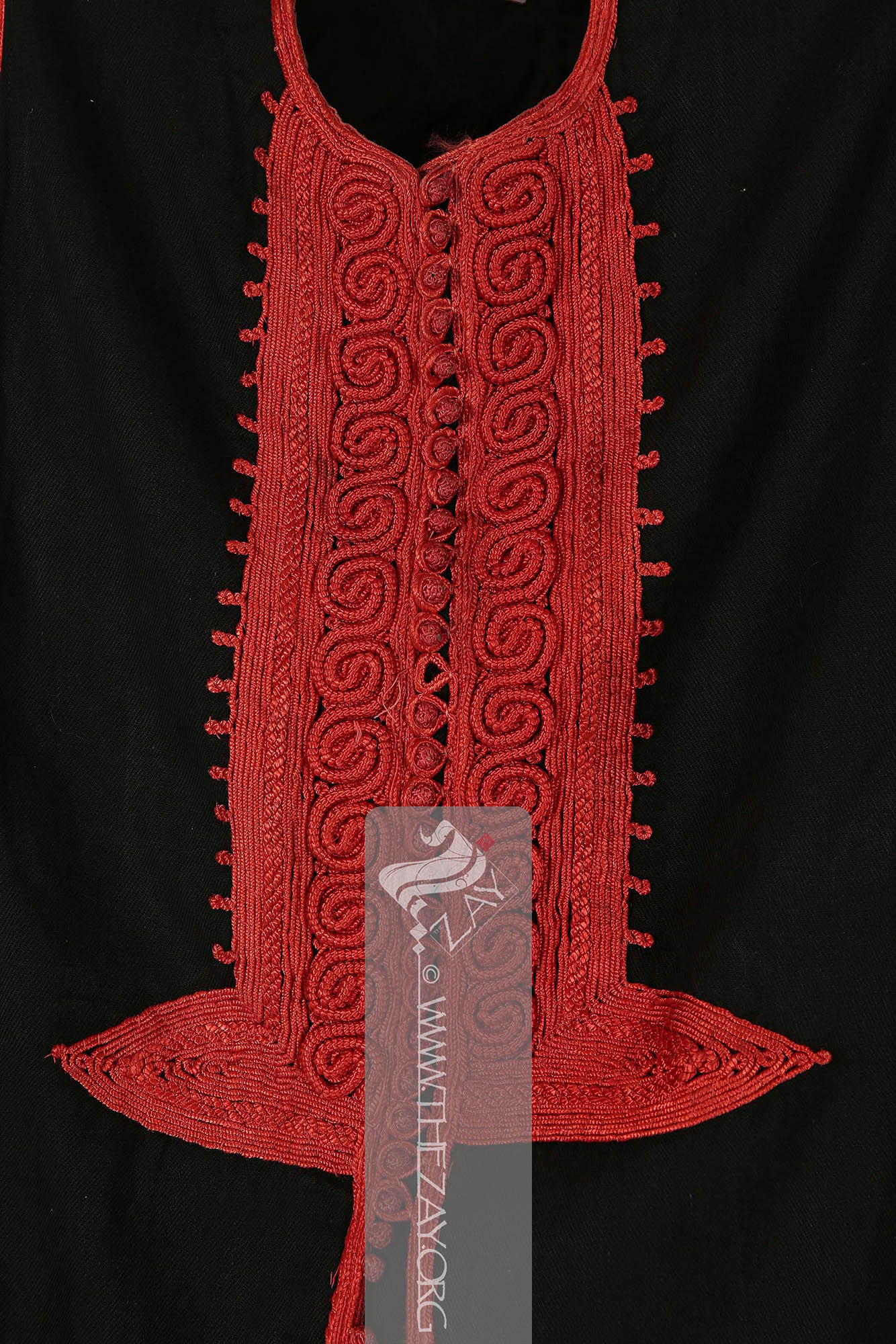
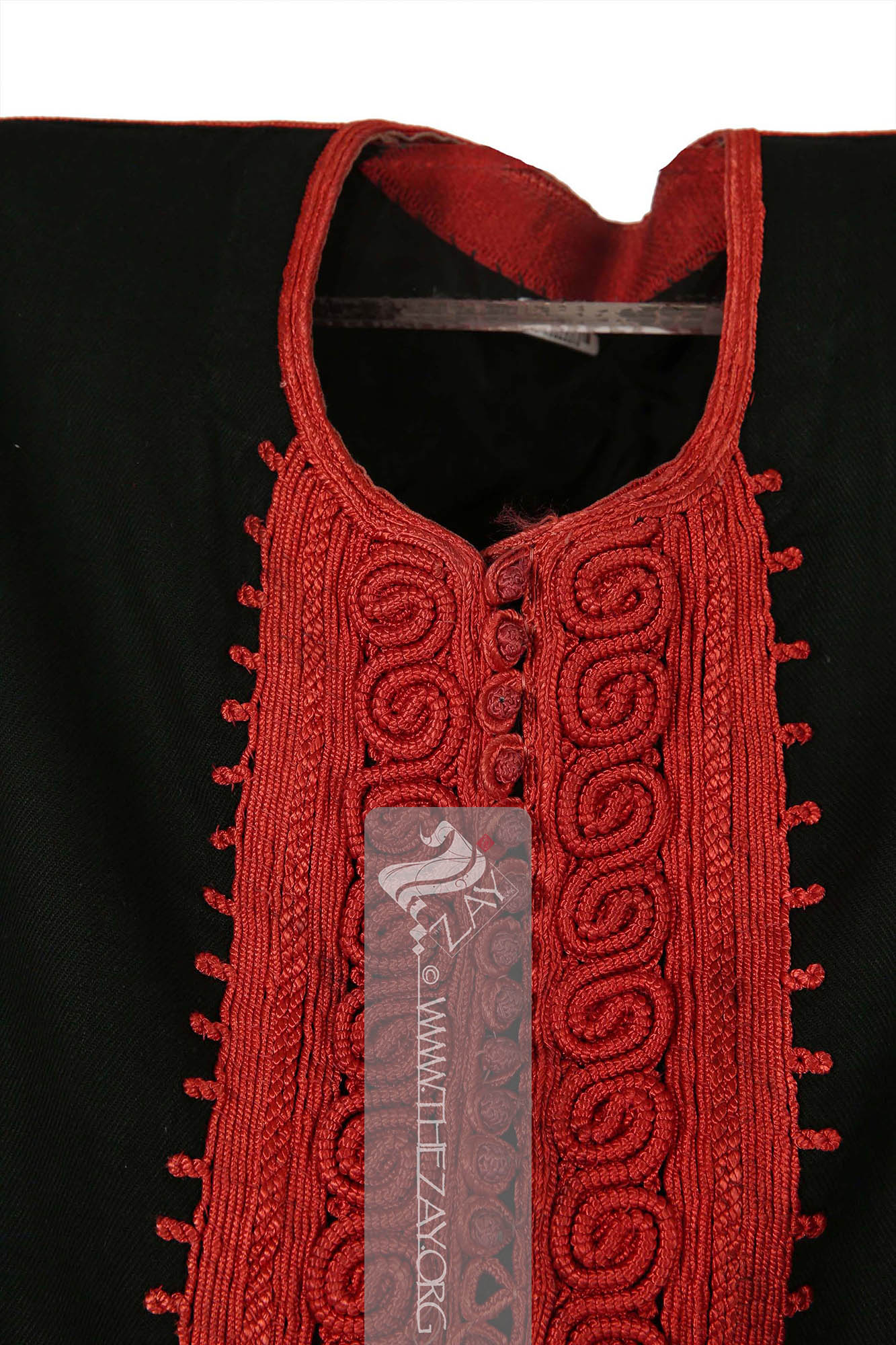
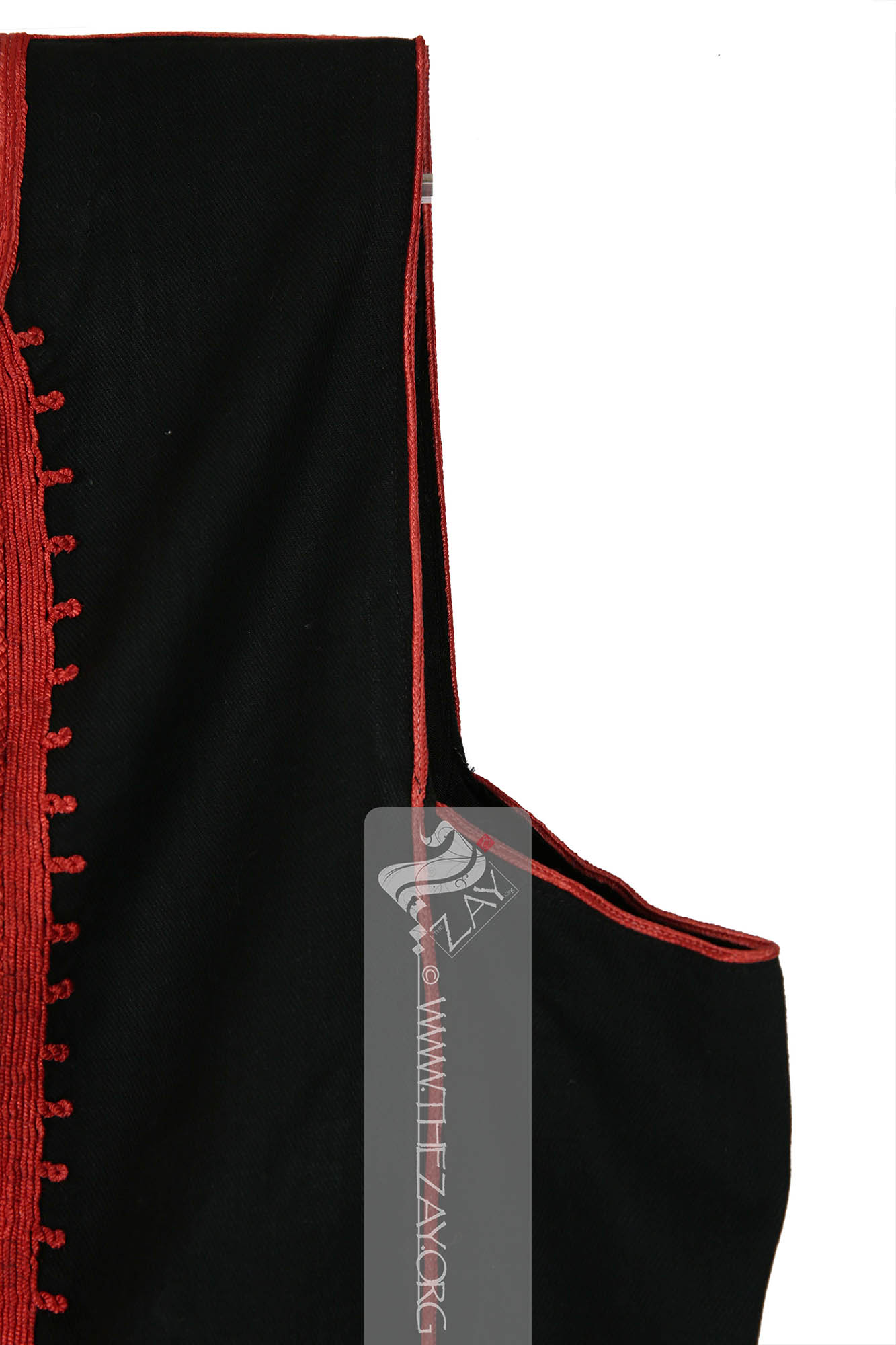


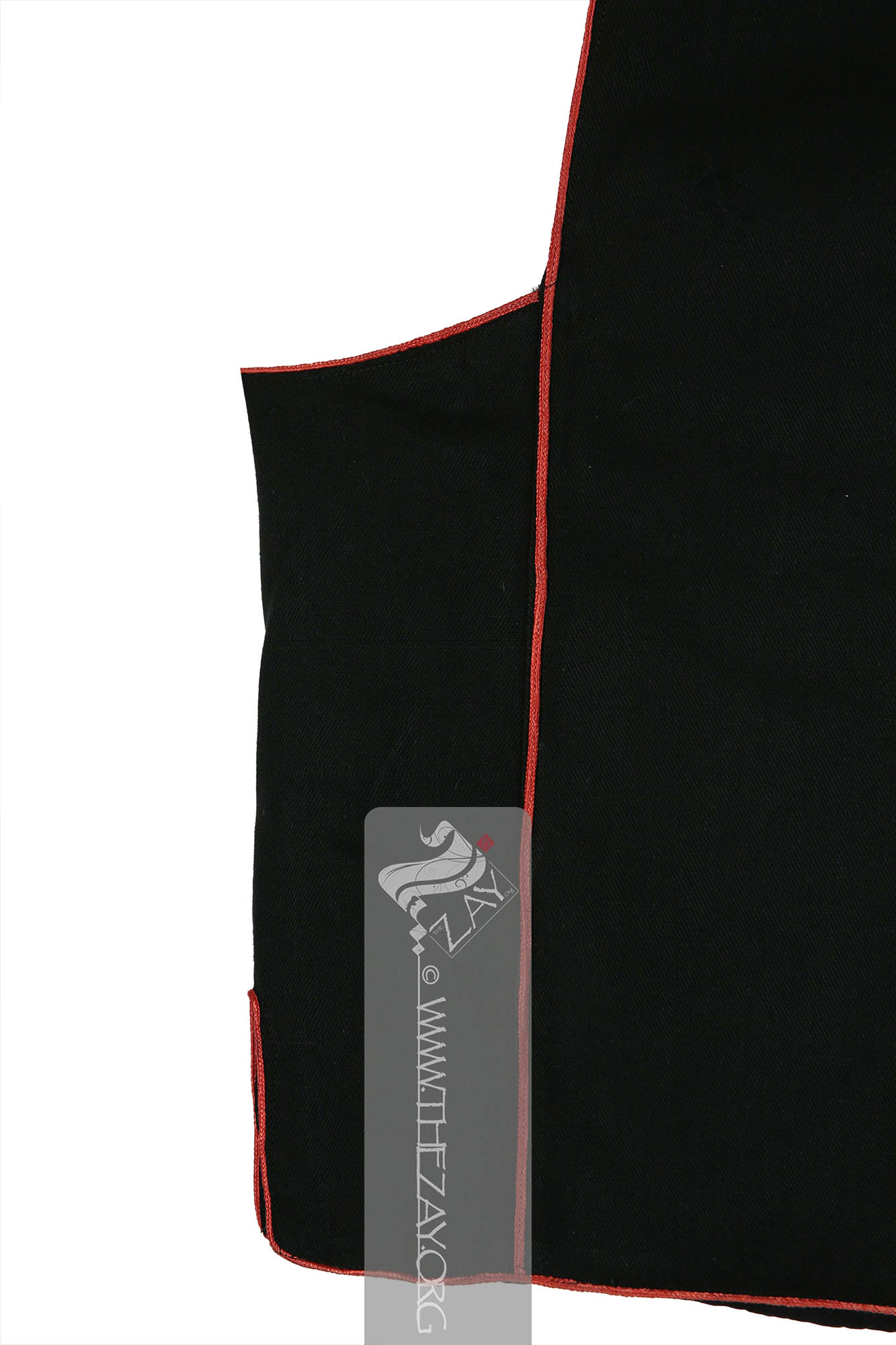
| Local Name | Sadriyah |
| Object Category | Overgarment |
| Gender | Male |
| Date of object | c. mid 20th century |
| Place Of orgin | Libya |
| Region | Libya |
| Object Range | Libya, Algeria, Tunisia, Morocco, Egypt et al |
| Dimensions | Length: 61 cm Width: 37 cm |
| Materials | Silk Cotton |
| Technique | Machine Stitched Hand Embroidered Hand Stitched |
| Color | |
| Motif | Abstract Floral |
| Provenance | Purchased, Independent Dealer, Texas 2021 |
| Location | The Zay Zay: (Arabic: costume, Pl. azyaā’), a set of clothes in a style typical of a particular country or historical period. Initiative |
| Status | In Storage |
| ZI number | ZI2021.500956b LIBYA |
Object Note
Part of a set along with three more items (ZI2021.500956 LIBYA, ZI2021.500956a LIBYA, and ZI2021.500956c LIBYA) also in the collection.
Object History
This piece was purchased by Dr. Reem Tariq
Ṭariq: (Arabic; Synonym: tulle_bi_talli
Tūlle_bi_tallī: (French: Tulle – a city in France where fine material for veil was first made; Turkish: tel – wire; Synonym: tariq; talli; badla; khus_dozi ), series of small metal knots made on a woven net ground as embellishment. The term is commonly used in the North African Arab region specifically in Egypt. Ṭariq: (Arabic; Synonym: tulle_bi_talli
Tūlle_bi_tallī: (French: Tulle – a city in France where fine material for veil was first made; Turkish: tel – wire; Synonym: tariq; talli; badla; khus_dozi ), series of small metal knots made on a woven net ground as embellishment. The term is commonly used in the North African Arab region specifically in Egypt.
Dr. Reem and The Zay Zay: (Arabic: costume, Pl. azyaā’), a set of clothes in a style typical of a particular country or historical period. Initiative first acquired the trousers, waistcoat, and jacket from the dealer, as the cloak itself was sold separately to someone in Europe. Upon Dr Reem’s request to complete the ensembles, the buyer of the cloak was later traced and agreed to sell it to The Zay Zay: (Arabic: costume, Pl. azyaā’), a set of clothes in a style typical of a particular country or historical period. Initiative. However, it was lost and remained untraceable for 3 months en route to the dealer inthe USA. Upon collection, the dealer managed to mail it to Dr Reem only to be lost in transit once more. Luckily the item was found again and finally arrived at The Zay Zay: (Arabic: costume, Pl. azyaā’), a set of clothes in a style typical of a particular country or historical period.’s doorstep unharmed after several hiccups. Amidst all this Dr Reem and The Zay Zay: (Arabic: costume, Pl. azyaā’), a set of clothes in a style typical of a particular country or historical period. Initiative were also furnished with a digital photograph of the gentleman donning the ensemble.
Object Features
This is a black waistcoat made of (twill
Twill: (English), one of the three primary textile weaves is defined by its prominent diagonal rib pattern. The fabrics woven in this method typically exhibit a pronounced, often darker front side, while the back is lighter.
Designed in the style of a men’s traditional ceremonial waistcoat (sadriyah
Ṣadrīyah: (Arabic: waistcoat, synonyms: sdayrīyah, ṣdayrīyah, sadrīyah), an embellished hip-length sleeveless vest worn in the North African countries by the Arab and Berber men. It is often adorned with silk thread and cord embroidery and fastened in the front. Couching: (Latin: collocare – Place together), in needlework and embroidery couching is a technique in which yarn or other materials are laid across the surface of the ground fabric and fastened in place with small stitches of the same or a different yarn
The embroidered pattern is an abstract arrangement done by coiling and twisting the braids and is inspired by floral designs. A central line of a wavy pattern runs vertically down parallel to the front opening on each side. While one side of this pattern is followed by straight rows of braided trimmings which gives way to 26 loops running vertically down, the other side has a similar trimming but thicker and it extends itself horizontally into an elliptical shape creating a series of horizontal elliptical lines.
A similar pattern is reflected on the embroidery of the opposite flap only the loops are replaced with 26 (frog_fastener
Frog_fastener: (Synonym: Chinese frog closure, frog closure), is a decorative and functional type of button used to fasten clothing. Said to have originated between c. 5th to 7th century China these buttons consist of a cord or braid looped through a decorative knot.
The waistcoat displays two small slits on the sides at the bottom, and the seamlines for each panel as well as the hem of the piece, are trimmed with floss Floss: (Old French: flosche – nap of velvet), is a type of silk fibre obtained from the cocoons of wild silkworms. It is characterized by its long, fluffy fibers that are not tightly woven, making it ideal for use in various textile applications such as embroidery, lace-making, and sewing. braids.
It is hand embroidered and partially hand stitched just like the rest of the ensemble, and is lined with black silk of (satin Sātin: (Arabic: Zaytuni: from Chinese port of Zayton in Quanzhou province where it was exported from and acquired by Arab merchants), one of the three basic types of woven fabric with a glossy top surface and a dull back. Originated in China and was fundamentally woven in silk.) weave with coral Coral: (Greek: korallion, probably from Hebrew: goral – small pebbles), is a pale to medium shade of pink with orange or peach undertones, resembling the colour of certain species of coral. pink silk edging and has two deep pockets on the underside of each front flap.
Links